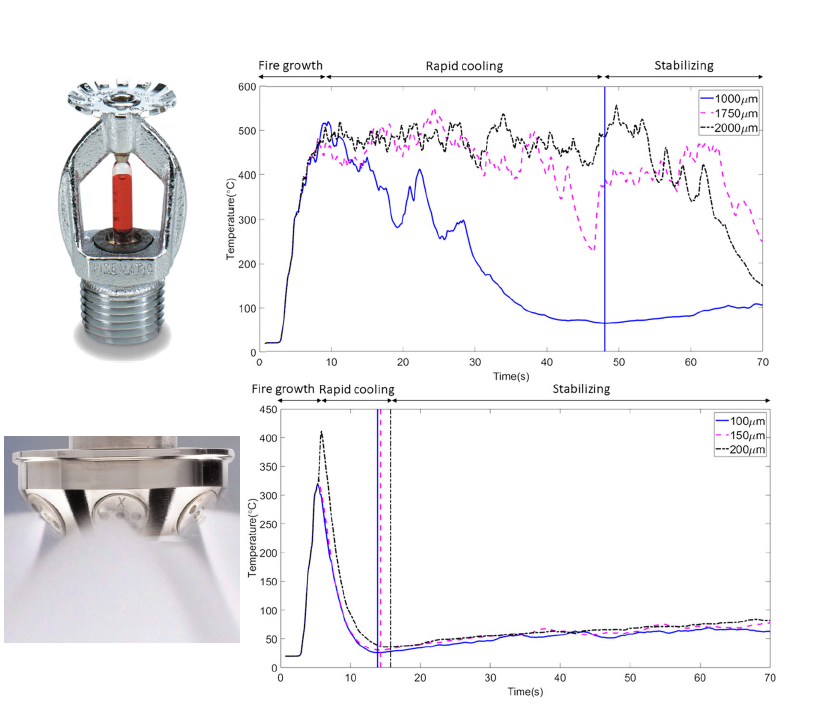With recent developments in the design and manufacturing process of water-based fire suppression systems, more advanced technologies such as water mist systems have expanded in their building application. Although the basic idea of using water as an agent to suppress fire is straight forward, there is still much to study for researchers and engineers to gain a better understanding of the effects, performance, and their underlying suppression mechanisms for sprinklers and water mist systems.

Characterization of Critical Fire Suppression Mechanisms for two approaches
It was found that latent cooling, volumetric displacement, and dilution of oxygen and fuel were the main suppression mechanisms for water mist systems, as smaller droplets evaporate more efficiently compared to larger ones. On the other hand, for sprinklers, heat extraction by water droplets from the fire was found to be the main suppression mechanism, and the evaporation effect is not as significant as in water mist systems. In order to understand the effect of sprinkler locations on fire suppression performance, a new study is undertaken recently. These data will be served as guidance for a better arrangement of fire suppression apparatus in buildings.
See our paper below for more info:
Critical assessment on operating water droplet sizes for fire sprinkler and water mist systems
2020/03/01
Published in: Journal of Building Engineering
Authors: H.Liu, C. Wang, I.M. De Cachinho Cordeiro, A.C.Y. Yuen*, Q. Chen, Q.N. Chan, S. Kook, G.H. Yeoh
